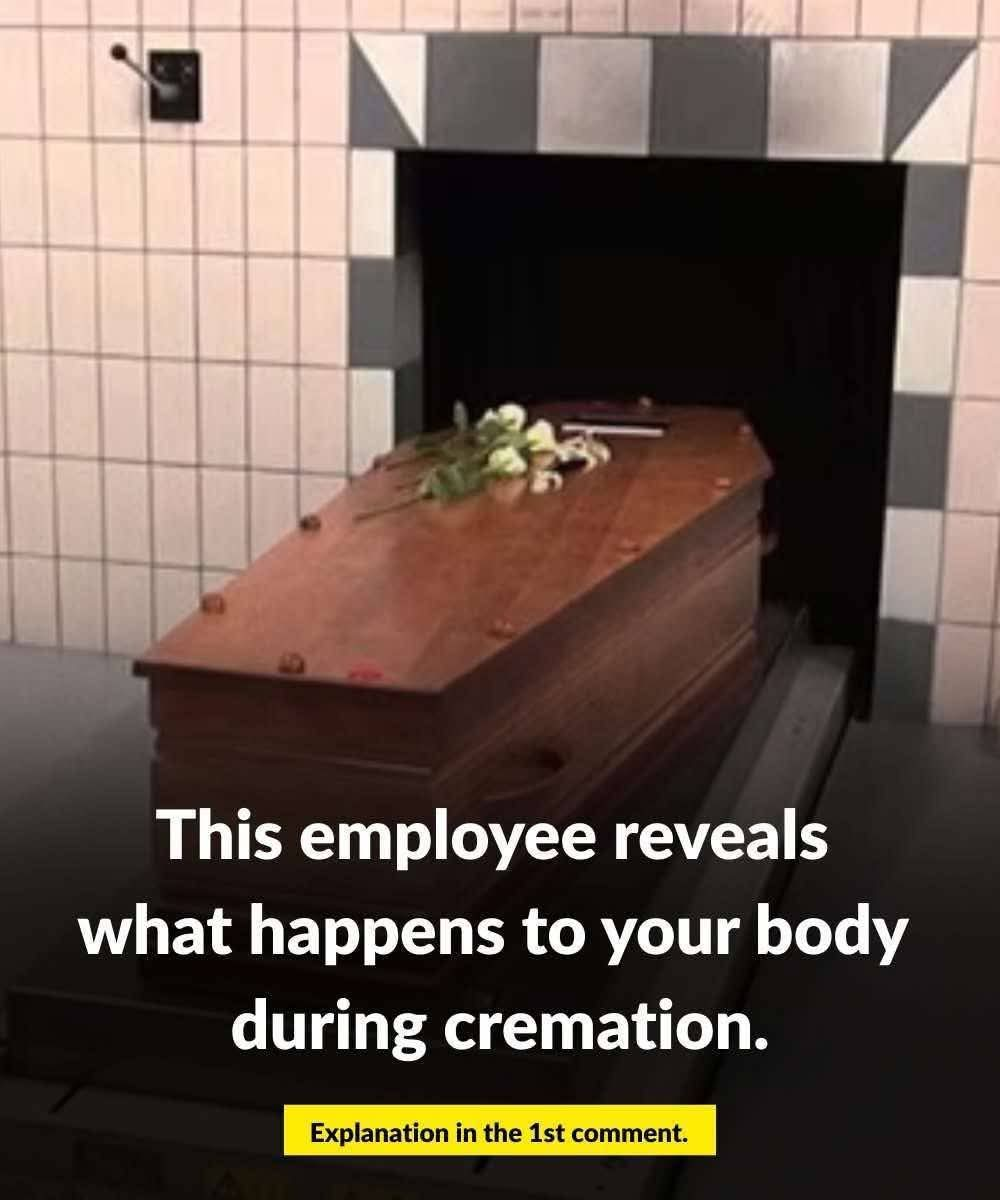This Is What Really Happens to Your Body in a Crematorium — And It’s Not Pretty

Most people have a general idea of what cremation means: turning a body into ashes. But what really happens inside a crematorium is a highly controlled, intense, and surprisingly emotional process. And no, it’s not as peaceful as many might assume.
The Cremation Process, Step by Step:
1. Identification and Preparation:
Before anything begins, the crematorium staff verifies the identity of the deceased. Jewelry, pacemakers, or anything that might react to heat is removed. The body is typically placed in a combustible container, usually made of wood or cardboard.
2. Entering the Chamber:
The body, in its container, is placed in a cremation chamber that can reach temperatures of 1,400 to 1,800 degrees Fahrenheit (760 to 980°C). This heat is necessary to break down tissue and bone.
3. The Real Burn:
Within minutes, soft tissues (skin, fat, muscles) begin to vaporize and burn. Organs shrivel and are consumed quickly. The body may even move slightly as tendons contract in the heat, sometimes giving an eerie illusion of motion.
4. Bones Don’t Just Turn to Ash:
Despite the term “ashes,” what remains are mostly bone fragments. These are too large to be considered “ash,” so they’re processed in a machine called a cremulator which grinds the bones into the fine powder most people are familiar with.
5. What’s Left:
The end result is usually 3–7 pounds (1.4–3.2 kg) of grayish-white ash, depending on the person’s size and bone density. Metals like dental fillings, surgical implants, or hip replacements are collected separately and often recycled.
It’s Not a Quiet Process:
While we like to imagine cremation as silent and clean, the reality involves loud fans, intense heat, occasional cracking sounds from bones, and sometimes visible flames. It’s a controlled fire designed to reduce a human body to its simplest form.
FAQs
Q: Does the body feel pain during cremation?
No. Once a person dies, there is no consciousness or pain. Cremation is performed after legal death is confirmed.
Q: Can multiple bodies be cremated at once?
No. By law (in most countries), only one body is cremated at a time in a chamber, unless it’s a special case like a mother and infant.
Q: Are the ashes you get really your loved one?
Yes. Strict protocols and identification tags are used to ensure the ashes returned belong to the correct person.
In Summary:
Cremation is a powerful process — both physically and emotionally. While it may seem clinical or even brutal, many find comfort in its symbolism: a return to the elements, a final transformation, and a way to say goodbye.






